How air conditioning really works
Hello guys and welcome back to my channel.
Ah air conditioning this marvel of the modern times.
In this video we will explore how the air conditioning works and all the other aspects correlated to this technology.
The modern air conditioning was invented by Willis Carrier in 1902. Even that the technology is old, the air conditioning that we are using today it’s based on the same principles invented by Mr carrier.
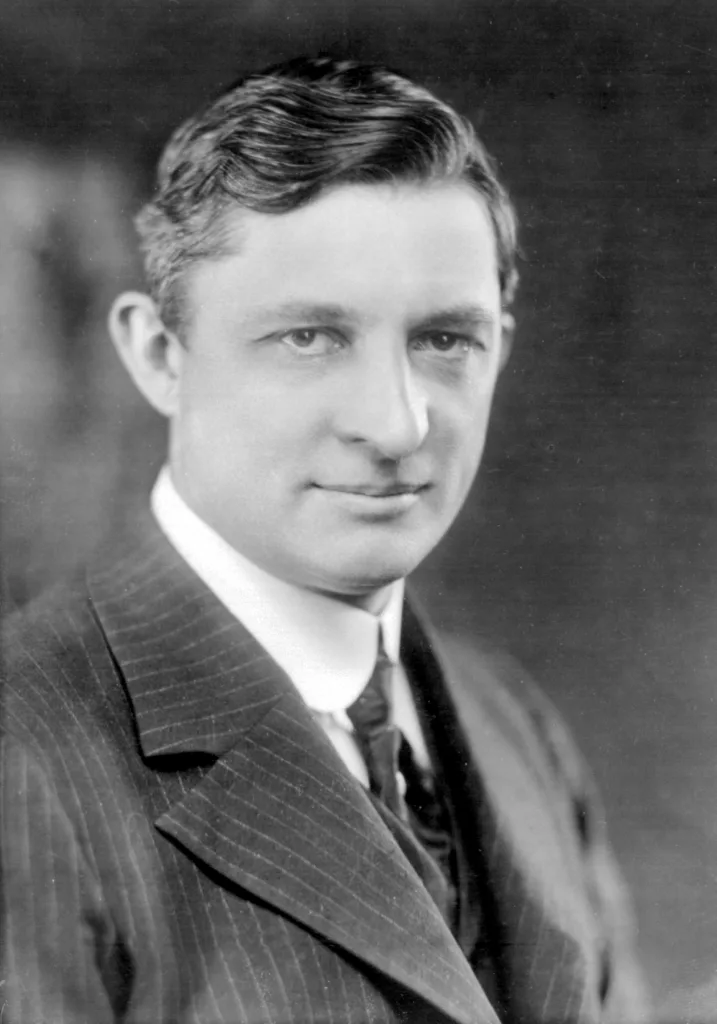
We can split the air conditioning systems in three major components: the compressor the condenser and the evaporator. Those components are using a specialised chemical called refrigerant and they play with the properties of the refrigerant as follows
- The compressor is raising the pressure and the temperature of the refrigerant gas and it’s sending it to the condenser coil where it’s converted into the liquid
- 2. The refrigerant travels via the pipe work and enters the evaporator coil. Here the liquid refrigerant evaporates and cools the indoor coil
- a fan blows the air across the cold evaporator coil where the heat inside the home is absorbed into the refrigerant
- the cold air is then circulated throughout the home while the heated evaporated gas is sent back outside to the compressor
- the heat is then released into the outdoor air as the refrigerant returns to a liquid state
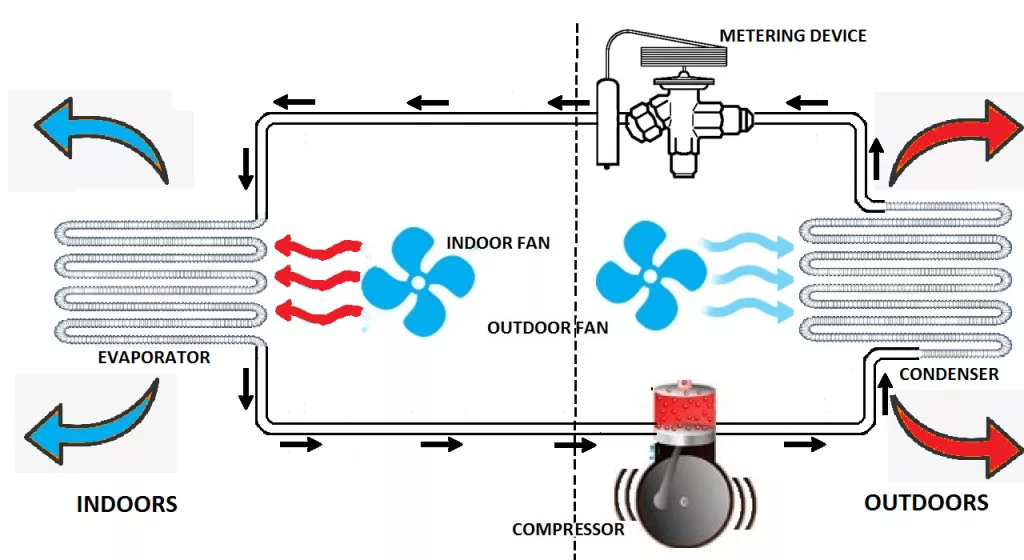
This cycle continues until your home has reached the target temperature.
So, when you power on the system and set the desired temperature, there are sensors detecting the current temperature and deciding whether the process should start or not.
The refrigerant is then sent via the copper pipes back into the compressor which is basically an electrical pump that is compressing the refrigerant which is now in a gas state backing to a liquid state. Is basically squeezing the gas to become a liquid. This is also increasing the temperature of the refrigerant. Any refrigerant has a corresponding temperature for any pressure level. So when the pressure is high the temperature is high as well. Moving on from the compressor the refrigerant enters the condenser which is there part with a big fan in the outdoor unit. Here, a part of its temperature it’s taken away but the pressure stays almost the same. Therefore, the refrigerant is now no longer in balance it’s having the pressure but it doesn’t have the temperature. It’s eager to get back the energy lost. The refrigerant is then forced into an expansion valve that drops its pressure.
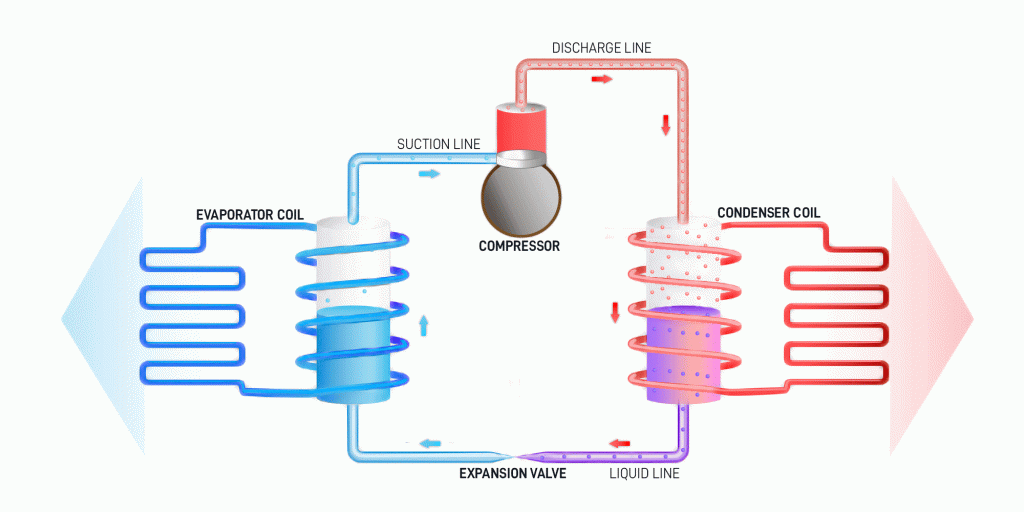
And when the opportunity presents itself in a form of nice evaporator that energy is quickly drawn from the air back into the refrigerant.
Nowadays, almost all AC systems are the Inverter type. What that means, without getting too deep into details is that the compressor can be better controlled and its speed can be changed, instead of having either on or off as options.
Also, today, all ac are able to reverse the cycle and transform the condenser into an evaporator and the evaporator into a condenser. Basically, the outdoor unit will cool and the indoor unit will produce heat. The efficiency of this mode is very similar with the efficiency of the cooling mode. This is not just a gimmick, the AC is used for heating is a multitude of places around the world. The best example is the Scandinavian countries where practically all houses use a heat pump for heating – either air to water or air to air.
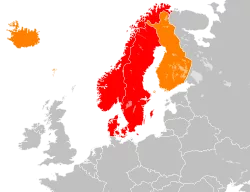
Lets explore now different types of air conditioning systems.
In terms of the layout of the system you can have split systems, mono block or portable.
The mono block systems are the ones that are installed at the windows sometimes where you have a part of the unit inside the room and another part of the unit outside. The portable units are the ones that as the name suggests are portable and they come with the large and ugly hoes where they evacuate the warm air outside.
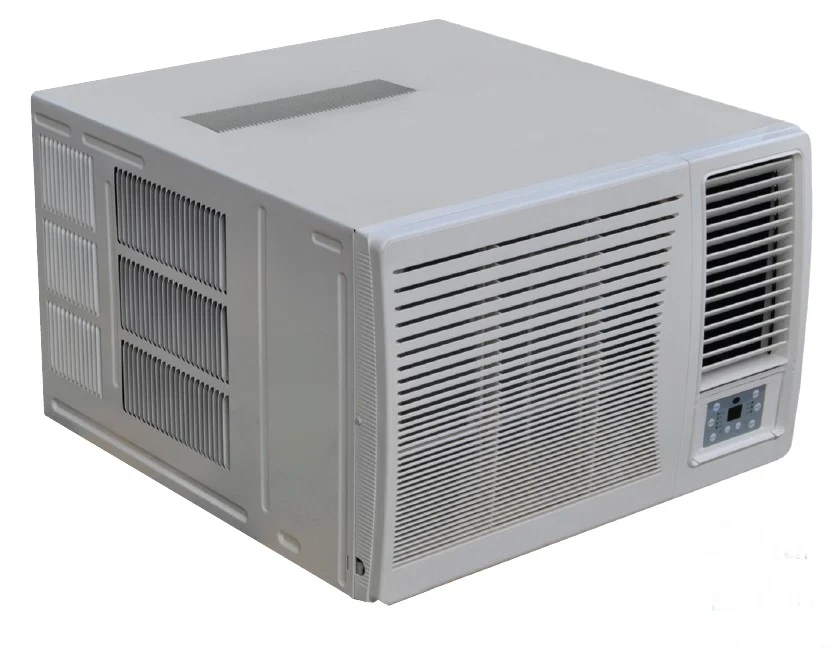
But the most useful air conditioning system by far is the split type and this is what we are going to explore further.
There is what the Americans refer to central air conditioning which is basically a split system with one outdoor unit and one indoor unit and from that one indoor unit you have ducts going everywhere in the house and you have one controller thermostat controlling the temperature for the whole house – hence the term central.
And then you have the non centralised system will you have individual units for each the room or at least for each space that you want to control.
There is the single split system and the multi split system. The single split is where you have one outdoor unit and one indoor unit. The multi split system is where you have multiple indoor units connected to just one outdoor unit.
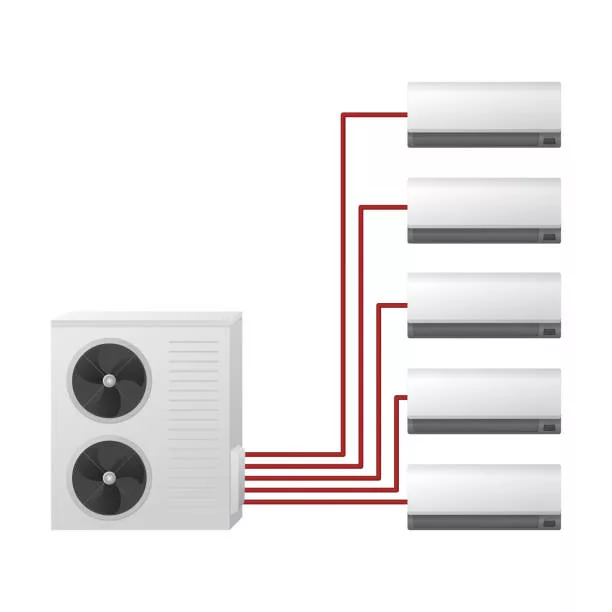
The most popular and maybe the most visible type of split air conditioning it’s the wall mount system. Those are the white boxes install up on the wall and each of those boxes are connected via pipes and cables to the outdoor unit. The advantages of those systems it’s the price and then easy access for maintenance and repairs. The disadvantage is that without careful selection of colours, textures and shapes they might not integrate in the rest of the room aesthetics. They usually come with a wireless remote as standard.
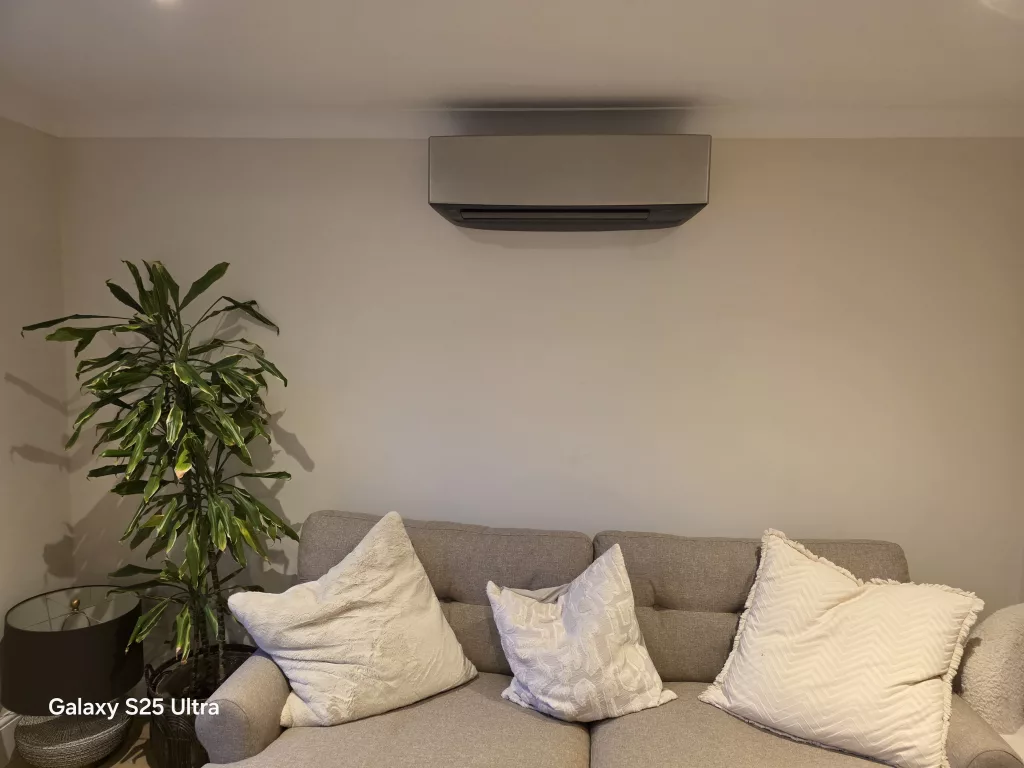
The next type is the cassette. The castle usually needs a minimum of 30-40 centimetres, but usually more than that above the ceiling. They are recommended for shops and restaurants and the access for maintenance and repairs it’s still easy. There is an option to have the grille either white or black both. I am not aware of other colours. Also, they can be either one way, or for ways. They usually integrate aesthetically much better in a commercial environment than in a domestic one. They come by default with a wired remote both there are different sensors that you can install in the corners of the grile and a wireless remote is also possible.
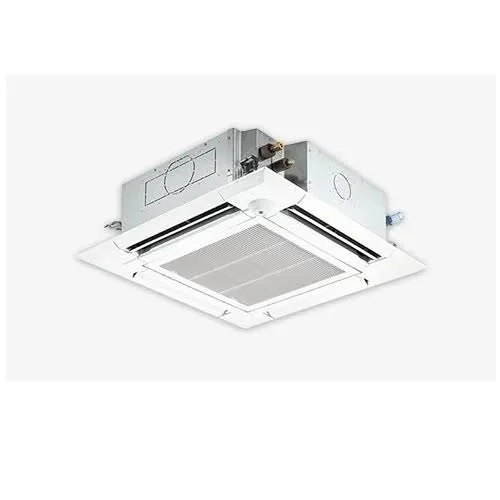
3rd type is the floor console. It looks like radiator and as the name suggests seats either on the floor or very close to the floor. There are not that many options when it comes to the shapes and colours and textures and they tend to be a bit more expensive than the wall units, but there are cases where only this type of unit can be installed.
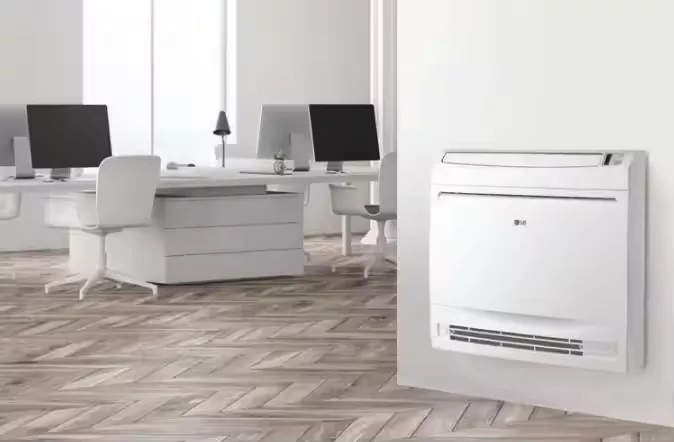
Next one is this ceiling mount unit. Those are designed for when there is no space on the walls and also there is no space inside the ceiling void. They tend to start from higher capacities because they are not designed to be used in small rooms. They have a very strong air flow and they are ideal for rooms with a very high ceiling. As we eat any system that is not designed to be used in a domestic environment the remote are usually hard wired remote.
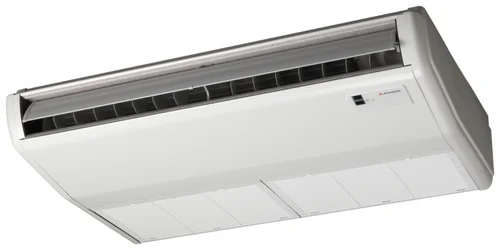
And the last but not least it’s the ducted system. This might look similar with the centralised air conditioning that we mentioned before bought there are big differences. One of them being that you can have a unit for each room therefore you will control each room individually. Those are usually installed in a multi split configuration where for example downstairs you will have wall units and upstairs you will have ducted units making use of the space in the loft above the rooms. Those you needs usually come with a wired remote that you install on the wall somewhere. As an advantage, there are practically invisible. There are only fvew grilles in the ceiling and a remote on the wall. As a disadvantage it’s the access for maintenance and repairs if it happens to be installed in hard to access enclosures.
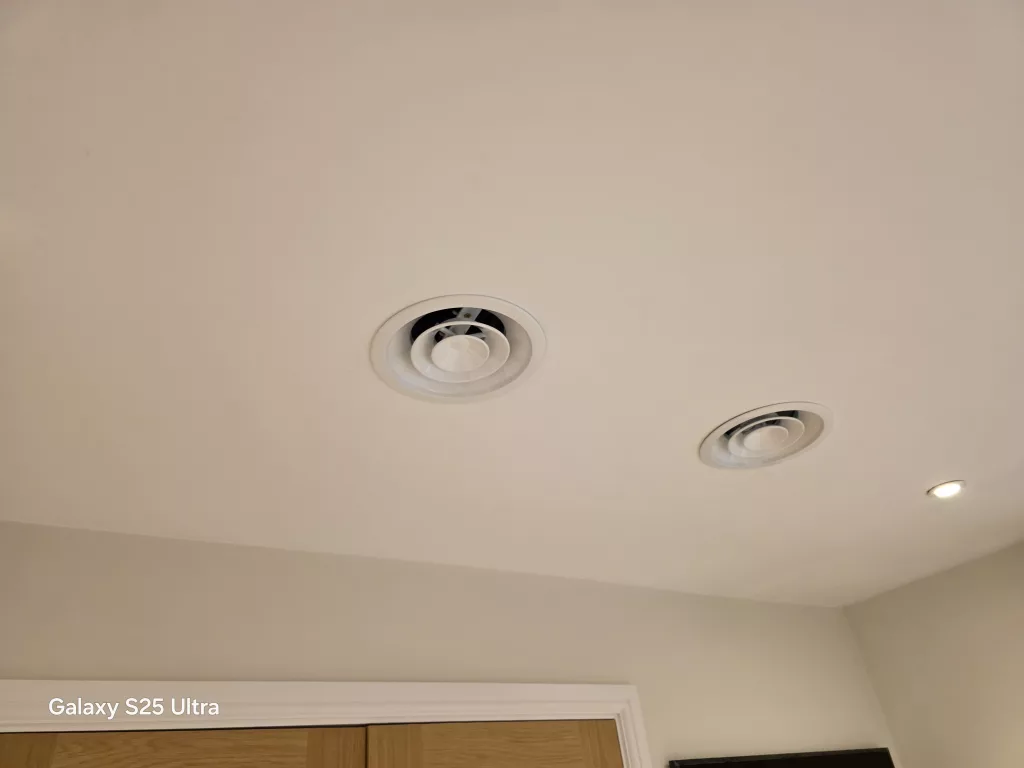
Almost every type can have a wireless remote as an option or Wi-Fi connection – even if that demands and extra transmitter to be connected to the unit. Some of them can be equipped with advanced filters especially the wall units and also some of them has optional sensors for detecting the room occupancy.
We will explore all the features of the ac systems and which one is the right one for the job in another video.
Until then, please hit the like and subscribe buttons and we will meet again!

You must be logged in to post a comment.